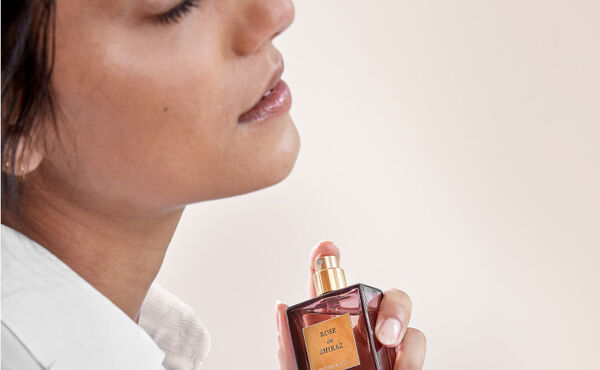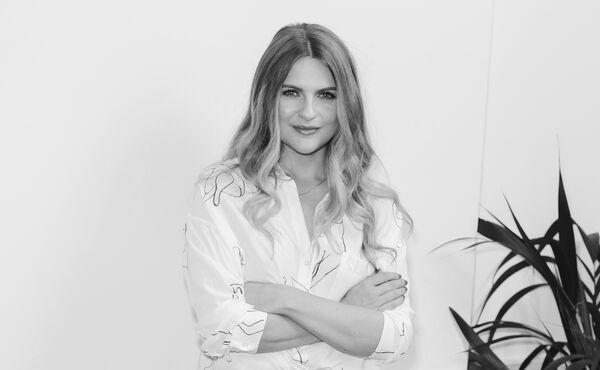The world of fragrance is wonderfully creative. It’s emotional, too. A perfume can conjure memories in your mind as clearly as looking at pictures in a dusty photo album. But there is also a science to the art of scent. Fragrances are categorised into families and knowing which families you are most drawn to can help you shop for perfume more easily. In this article, we reveal the secrets of scent, fragrance layering, and how to find a fragrance you’ll love.
Fragrance: The Lingo
First up, you need to be able to talk fragrance or at least understand the lingo and, like any industry, the fragrance world has its own language. A typical fragrance is comprised of oils that are blended together with a base (most often alcohol) to create either an eau de toilette or an eau de parfum.
Eau de toilette has a lower percentage of oils than eau de parfum and so eau de toilette tends to be more affordable, whereas eau de parfum tends to linger on the skin for longer.
When it comes to fragrance, there is a lot of talk of notes. These are descriptors of scents such as citrus or wood, or names of ingredients such as rose or oud. What the notes do is help to describe what the fragrance smells like as it evolves on the skin (more on that later).
Fragrance: The Olfactive Families
There are so many fragrances in the world but what’s handy is that they can be categorised. Back in 1983, fragrance expert Michael Edwards came up with a fragrance wheel that categorised perfumes into different olfactive families. Since the world of scent is ever-evolving, the wheel has morphed over the years, but the general structure has stayed true. There are the main categories of olfactive families and then various sub categories.
At Rituals, the five main olfactive categories in our new House of Rituals Talisman Collection of eaux de parfum are Fresh, Floral, Sensual, Wood and Oriental. The secondary olfactive categories help to further categorise the fragrances revealing their nuances, for instance you could have a fresh fragrance that is also fruity, sweet or woody. Alternatively, you could have a wood fragrance that is also floral or leathery.

Fragrance: How It’s Constructed
Typically, perfumes are comprised of top notes, middle notes and base notes. Top notes are what you intially smell when you first spritz a perfume. These tend to be a burst of light, fresh and sparkly aromas. Then as the perfume dries down onto the skin, the middle notes (also known as heart notes) are unleashed, these are the essence and personality of the perfume. Finally, the base notes are the ones that linger on the skin and are often the notes you remember most. Spritzing a scent is like taking a journey every time and all the notes work together to draw you from A to B.
Fragrance: How to Find Your Favourites
Fragrances, like people, have so much personality that the best way to know if you will like a scent is to try it. Perfumes tend to smell different on everyone because the ingredients mingle with our own skin and sweat that has a unique aroma; that’s why a perfume can smell wildly different on a friend than on you. But, you can definitely narrow down the field and get to a place where you can be pretty confident in buying fragrances (even online, if you wanted to). The secret is to look at the fragrance you wear today and the perfumes you have owned and loved before. You can Google the ingredients and olfacctive families of almost all fragrances on directory websites such Fragranatica. Then ask yourself:
-What types of fragrances do I like? Am I drawn to heavy or light scents?
-Are the perfumes I’ve owned all from the same olfactive family? For instance, are they all florals? Or, are there a couple I like?
-Now, drill down further. For instance, if you really like florals, ask yourself: do they all have similar notes in them such as rose or jasmine?
In my case, I know that I love woody fragrances that have hints of leather, tobacco and amber. I’m also always drawn to perfumes with pink pepper in. It’s typically used as a top note because it’s slightly spicy and has an uplifting radiance to it. Once you know this information about yourself, it will be easier to find fragrances you know you’ll like or even love.
Fragrance: How to Layer Your Perfume
Fragrance layering gives you the freedom to experiment and custom create a truly signature scent to reflect your mood or personality. But how to go about it? Contrary to popular belief, it’s not just about spritzing two perfumes directly on top of each other, it can start in your post-shower routine with scented body creams. You could also play around with the pulse points on your body, for example, by using one perfume on your wrists and another behind your ears. If you choose to simply layer one over the other, like you can with our miraculous L’Éclat perfume, it’s best to spray heavier scents first so they don’t overpower your second choice.
There’s no such thing as right or wrong when it comes to combining fragrances, though to avoid overwhelming your senses – and that of the people around you – I do recommend not combining two heavy and rich scents, and pairing complementary scents instead.
It’s fun to take a journey of discovery. If you want to explore your fragrance personality you can head to the perfume bar at our flagship store House of Rituals in Amsterdam. There you can peruse the 25 new fragrances in the Talisman Collection that is sold exclusively in the new store. Not based in the Netherlands? You can shop our existing collection of beautiful eau de parfums and eau de toilettes here.







